Contents
Many people think that roses are too picky and will not be able to grow in cold climates. However, many gardeners manage to grow beautiful bushes even in the conditions of Siberia and the Urals. These plants feel calm in cold weather, but roses need to be covered for the winter. This is the only way they can survive the harsh winters. In this article, we will discuss an issue that worries many residents of cold regions. Below you will learn how to cover roses for the winter in the Urals.
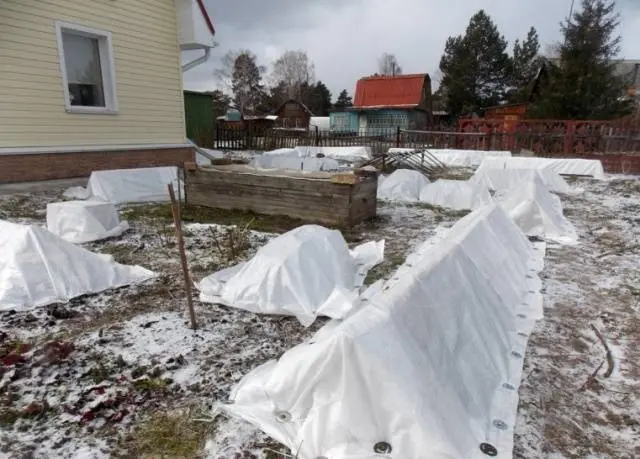
Choosing a variety and site for growing roses
To select the ideal bushes, it is necessary to take into account the peculiarities of the climate. In the Urals, spring is usually late, the summer period is very short, and in winter there are severe frosts and cold winds. Temperatures can often drop as low as -40°C. Not every variety will be able to withstand such conditions. Therefore, you should choose special zoned varieties that are adapted to cold climates. Such bushes are grown in nurseries in the Urals. Canadian varieties of roses are also suitable, they are no less resistant to cold climates.
Pay attention to grafted bushes. They are stronger, and also boast good immunity. Thanks to this, they are not afraid of many diseases, and winter frosts are much easier to tolerate compared to own-rooted roses.
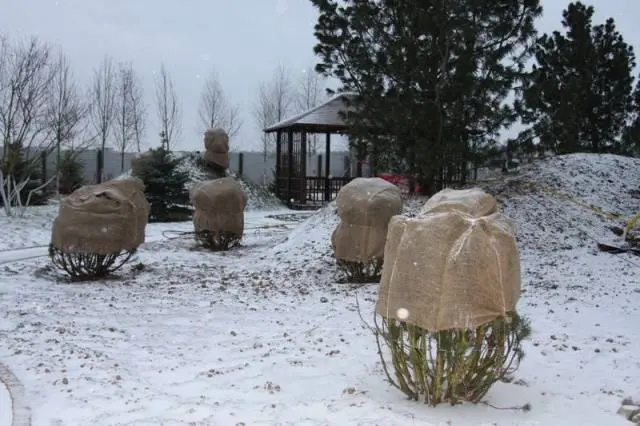
Open areas are not suitable for growing roses in the Urals. In such conditions, plants will be constantly exposed to cold winds. Bushes can be placed near houses, arbors and spreading bushes. In addition, roses do not like stagnant moisture. Given this, you should choose places on a small hill. Elevated places warm up the fastest in early spring, so roses can wake up faster. Moisture often accumulates in the lowland, which is why various fungi and rot often appear.
How to properly cover roses
First of all, you need to familiarize yourself with the general rules for sheltering roses. They apply to all regions:
- it is not recommended to cover roses too early. A little hardening will only benefit them. You can start building a shelter after the air temperature drops below -5 ° C;
- at the end of summer, they stop fertilizing with nitrogen fertilizers. They contribute to the growth of young shoots, and during preparation for winter this is undesirable;
- if you cut the bushes strongly at the end of August, then late shoots will begin to form on them. Often, before the cold weather, they do not have time to ripen;
- for the ripening of the shoots, you need to stop watering the roses in the autumn.
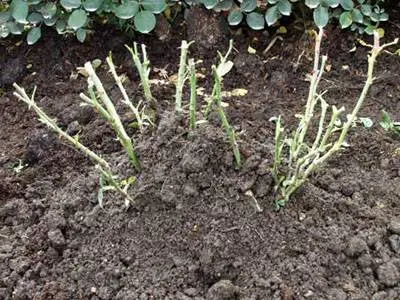
It is necessary to prepare roses for wintering since the summer. From the second half of July, gardeners begin to take care of the bushes more carefully. Feeding plays a very important role. Remember that nitrogen-based fertilizers can only be applied until the last weeks of July. At the end of summer, it is recommended to use only top dressing, which includes potassium and phosphorus. They contribute to the process of woody stems.
Preparing roses for winter
The preparation of the bushes takes place in several stages. At the end of summer, the bushes should be cleaned. To do this, all the lower leaves are removed and burned. In no case should you leave the leaves under the bush. This can cause the spread of rot and other diseases. The upper leaves should not be cut, they are necessary for roses for the process of photosynthesis.
Then the lower part of each bush should be sprayed with a special Bordeaux liquid. In this case, only the lower shoots are sprayed, since they will go under cover for the winter. The stems at the root system must be sprinkled with a layer (10 or 15 cm) of the substrate. It can be leaf humus or peat, in which sand, sawdust, and shavings can be added.
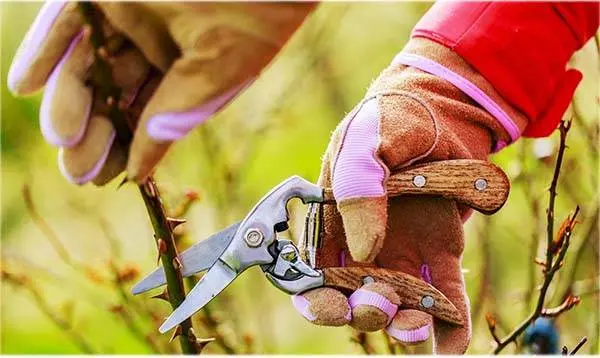
Later, it will be necessary to remove the remaining leaves and prune the bushes. You do not need to cut only climbing varieties of roses. All other bushes are shortened without sparing. Only 50 cm in height should be left. Usually pruning is carried out in October. Only after that you can proceed directly to the shelter of roses.
Ways to hide roses in the Urals
There are many ways to shelter roses in this area. Ideally, just sprinkle the bushes with snow. Such a snowdrift perfectly holds heat and protects from winds. However, since snow falls only in early December, this method is practically not practiced. By this time, the temperature will drop rapidly and the plants may simply freeze.
More often, roses are covered with some kind of dry material, and after that they cover everything with a waterproof film. But even in this case, much depends on the particular variety. For example, climbing and hybrid tea roses cover differently. If the bush is spread in different directions, then you will have to cover each separately.
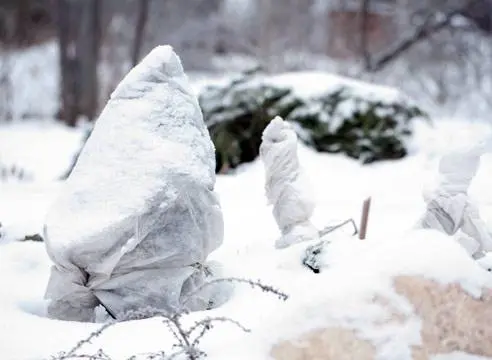
At the beginning, roses are covered with dry cardboard boxes or wooden boards. After that, the structure can be covered with plastic wrap. In this form, roses are not afraid of frost, wind, or moisture. The edges of the film should be pressed with bricks or in any other way, the main thing is that moisture does not get inside.
Many gardeners practice the following method:
- The bush is wrapped with dry material in several layers.
- Then wrap well and tie with twine.
- After that, you need to put a bag on the bush, for example, for garbage.
- In this form, roses are laid on the ground.
- When the first snow falls, you will need to shovel it onto a bush.
- In the spring, after the snow melts, the plastic bag is removed, and the bush, along with the covering material, is left to dry.
- The material is removed only after warm, stable weather sets in.
If you have a large rose garden and the bushes grow in the same row, you can build a shelter for them from the arcs. Both metal and plastic arcs are suitable for this. They are installed in such a way that such a small greenhouse is obtained. From above, the plants are covered with dry material, as in the previous case, and then with a film.
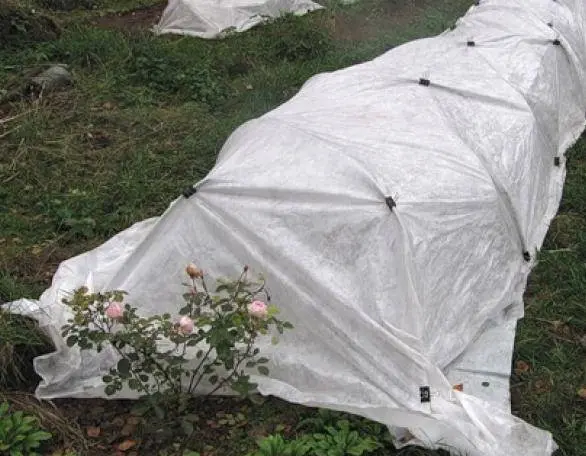
Thus, it is possible to cover individual bushes. To do this, the arcs must be placed crosswise. Before this, the plant is shortened to fit the height of the arc. Then everything happens according to the method described above. Lutraxil or spunbond can be used as a covering material.
How to cover climbing roses
Climbing varieties are not as easy to cover as ordinary spray roses. In this case, you will have to work a little more. Everyone starts with the preparation of roses. They need to be removed from the supports and cut off all old and damaged stems. Young shoots are not pruned, as buds may form on them next year.
Bush varieties need to be cut off completely, leaving only the lower parts of the shoots, but climbing varieties are cut only in order to form a bush and remove damaged shoots. Immediately bending the bush to the ground can be difficult. Often gardeners have to carry out this procedure in several stages. This must be done carefully so as not to break the young shoots.

It is very important that the bush is not completely pressed to the ground, there should be some space for air. Then you can treat the plants with iron sulphate. This will protect plants from many diseases. When frost sets in, the bushes are covered in 2 layers with lutraxil-60.
Closer to spring, it will be necessary to remove snow from the bushes. At this time, it becomes wet and heavy. Under such pressure, the plant may break. In addition, in the spring it will begin to melt and may seep through the shelter. In warm weather, you can open the shelter so that the plants slowly get used to temperature changes.
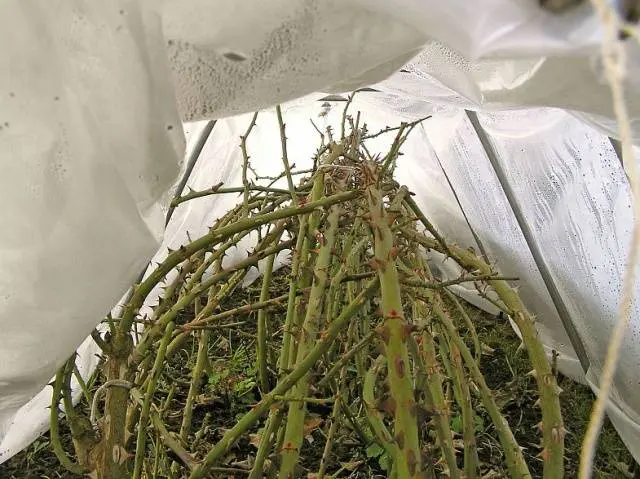
Conclusion
Properly sheltered plants will endure any frost, and next year they will again delight you with their flowering. The detailed instructions in this article will help you carry out the procedure quickly and efficiently.









